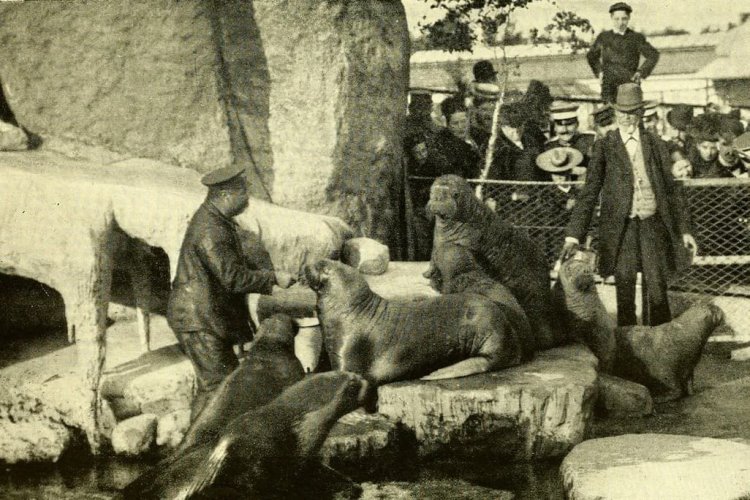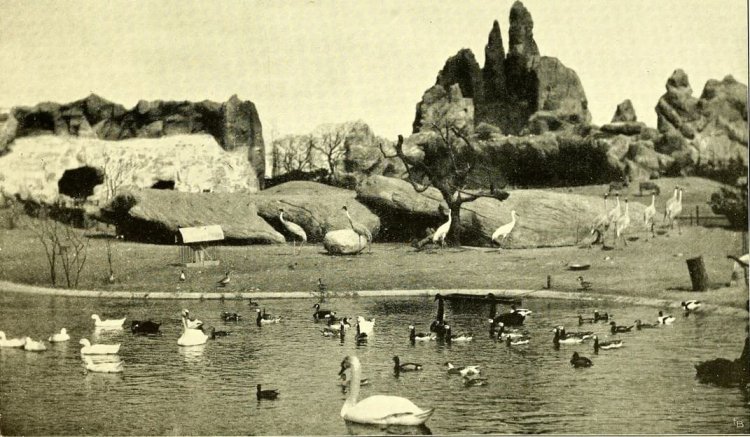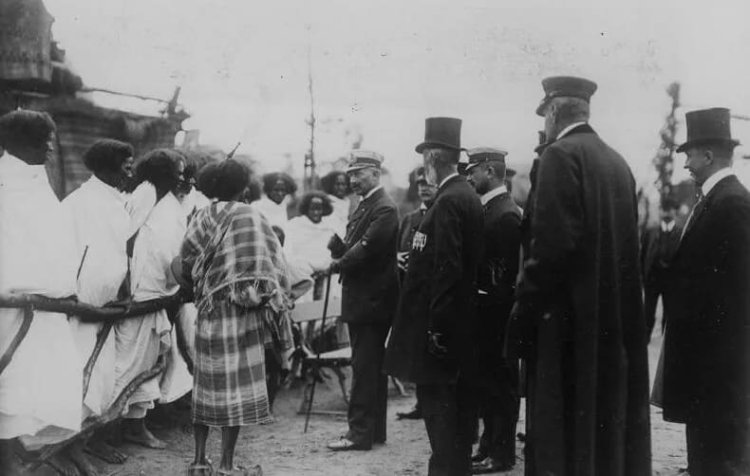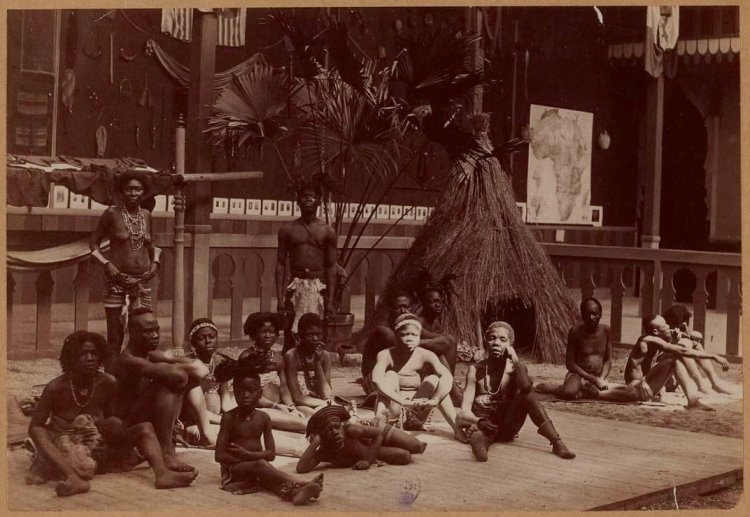Human Zoos: The Dark Secret Behind Modern Zoos' Creator
Leela Adwani |Jun 24, 2025
The father of modern zoos had a twisted past: Carl Hagenbeck created "human zoos" that displayed indigenous people like exotic animals before revolutionizing animal care.
- Chinese Parents Sell Daughter's Corpse As A Ghost Bride For Rs 9 Lakh
- Top 10 Weird Types Of Phobia That You Probably Had But Never Knew
- How Sumo Wrestlers Train And Live | Japanese Sumo Rules, Rankings & Salaries
Today's modern zoos feel like nature documentaries come to life. Spacious outdoor exhibits mimic natural habitats with artificial mountains, sparkling lakes, and lush vegetation. However, few visitors realize this revolutionary design comes from a man with an extremely controversial past: Carl Hagenbeck.

This German businessman didn't just father modern zoos. Furthermore, he pioneered something far more sinister – displaying human beings, particularly indigenous people, as exotic specimens in what became known as "human zoos."
When Zoos Were Animal Prisons
In the early 20th century, zoos in Paris, London, and New York looked nothing like today's facilities. Lions, elephants, and seals lived in cramped metal cages that resembled prison cells more than homes. Moreover, animals lived in isolation without any elements reflecting their natural environments.
Carl Hagenbeck thought completely differently. He believed animals should live in environments closely resembling their natural habitats. Additionally, he wanted them to express natural behaviors like climbing, swimming, and hunting.
In 1907, he made this vision reality by opening Tierpark Hagenbeck in Hamburg, Germany. The world witnessed its first zoo without iron bars or enclosed cages. Instead, brilliant design featured outdoor "living environments" with artificial rock mountains, shallow ponds, and observation moats replacing barriers.
This breakthrough immediately attracted visitors and laid the foundation for all modern zoo models that followed.

The Disturbing Prototype: Testing on Humans First
Here's where the story gets dark. Hagenbeck didn't first test his "natural simulation" philosophy on animals. Instead, he experimented on actual human beings through indigenous people exhibitions in human zoos – a bizarre entertainment form steeped in colonialism and racial discrimination.
Starting in 1874, after a friend's suggestion, Hagenbeck brought Sami reindeer herders from Northern Europe to Hamburg. Subsequently, he recreated their daily lives in an empty yard behind his house.
Leather tents, snowshoes, live reindeer, and traditional ceremonies were recreated to create a "miniaturized Lapland" in the heart of Europe. Consequently, crowds became absolutely mesmerized by this spectacle.
The Business of Human Exhibition Explodes
The success of this performance made Hagenbeck quickly expand his model. He brought indigenous groups from Sudan, Greenland, Labrador, and even Tierra del Fuego (Chile) to Europe for public display.
Unlike typical staged theatrical performances, Hagenbeck emphasized the "authenticity" of these exhibitions. He believed audiences would be more interested in observing indigenous people in their daily activities rather than watching directed performances.
This thinking, despite appearing humanitarian on the surface, reflected an objectifying perspective. It treated indigenous people like living research subjects, essentially like animals in cages.

The Human Cost of Entertainment
Although many individuals participated in these exhibitions through contracts and received compensation, numerous heartbreaking cases occurred. For instance, a group of Inuit people died from smallpox during an exhibition because they weren't vaccinated. Similarly, Kawésqar people were kidnapped, displayed nearly naked, and died from diseases while far from home.
Hagenbeck once declared he would completely abandon human exhibitions after these tragic deaths. However, in reality, he continued these activities until the late 1880s.
A Continental Phenomenon of Human Display
During its peak period, human zoos became a phenomenon across Europe and America. They appeared at world fairs, attracting millions of visitors. Estimates suggest 20,000 to 25,000 indigenous people were displayed during the late 19th and early 20th centuries.
These "living environments" weren't merely entertainment. Moreover, they conveyed a deep political message: indigenous people were "vanishing races" that needed "preservation" or at least observation before disappearing.
This perfectly aligned with colonial ideology of the time. Specifically, this thinking believed "savagery" would naturally lead to extinction, and European civilization had a mission to "save" supposedly backward peoples.

From Human Exhibits to Animal Revolution
When the human exhibition market became saturated, and exotic animals once again became the center of attention, Hagenbeck redirected his focus back to the animal world. Nevertheless, his influence on the zoo industry became a lasting legacy.
Outdoor habitat models, natural simulation display methods, and the perspective that animals aren't just entertainment objects but living beings deserving respect and proper care – all originated from him.
The Modern Zoo Controversy Continues
Today, zoos remain a controversial topic. Some people praise modern zoos' conservation efforts, helping save numerous species from extinction. Conversely, others oppose them, arguing that keeping animals captive is unnatural and unethical.
However, it's undeniable that thanks to Hagenbeck's pioneering innovations – from eliminating iron cages to simulating ecosystems – zoo animals today live in vastly better conditions than a century ago.
The Complex Legacy of Carl Hagenbeck
Carl Hagenbeck remains a complex figure in history. On one hand, he was the first person to question how humans should treat wild creatures in captivity. Additionally, he pioneered the idea of respecting animals' natural behaviors.
On the other hand, he contributed to a dark chapter in human history by turning indigenous people into display objects. His legacy serves as a profound reminder about the intersection between progress and morality, between science and compassion.

What Human Zoos Teach Us About Progress
The story of human zoos reveals how easily good intentions can mask terrible practices. Hagenbeck genuinely believed he was educating the public and preserving "vanishing cultures." Instead, he created a dehumanizing spectacle that reinforced colonial attitudes.
This historical lesson remains relevant today. As we celebrate modern zoos' conservation efforts, we must remember that progress without ethical consideration can lead to profound harm.
The Bottom Line: Learning from Dark History
Carl Hagenbeck revolutionized animal care while simultaneously exploiting human beings. His human zoos represent one of history's most disturbing examples of entertainment at the expense of human dignity.
Today's zoos face their own ethical challenges. Furthermore, they must balance entertainment, education, and conservation while ensuring animal welfare. The shadow of human zoos reminds us that good intentions aren't enough – ethical practices must guide every decision.
Most importantly, Hagenbeck's complex legacy teaches us that any civilization must carefully weigh progress against morality on its evolutionary journey. The road to progress should never be paved with the exploitation of others, whether human or animal.
- Tag






Comments
Sort by Newest | Popular